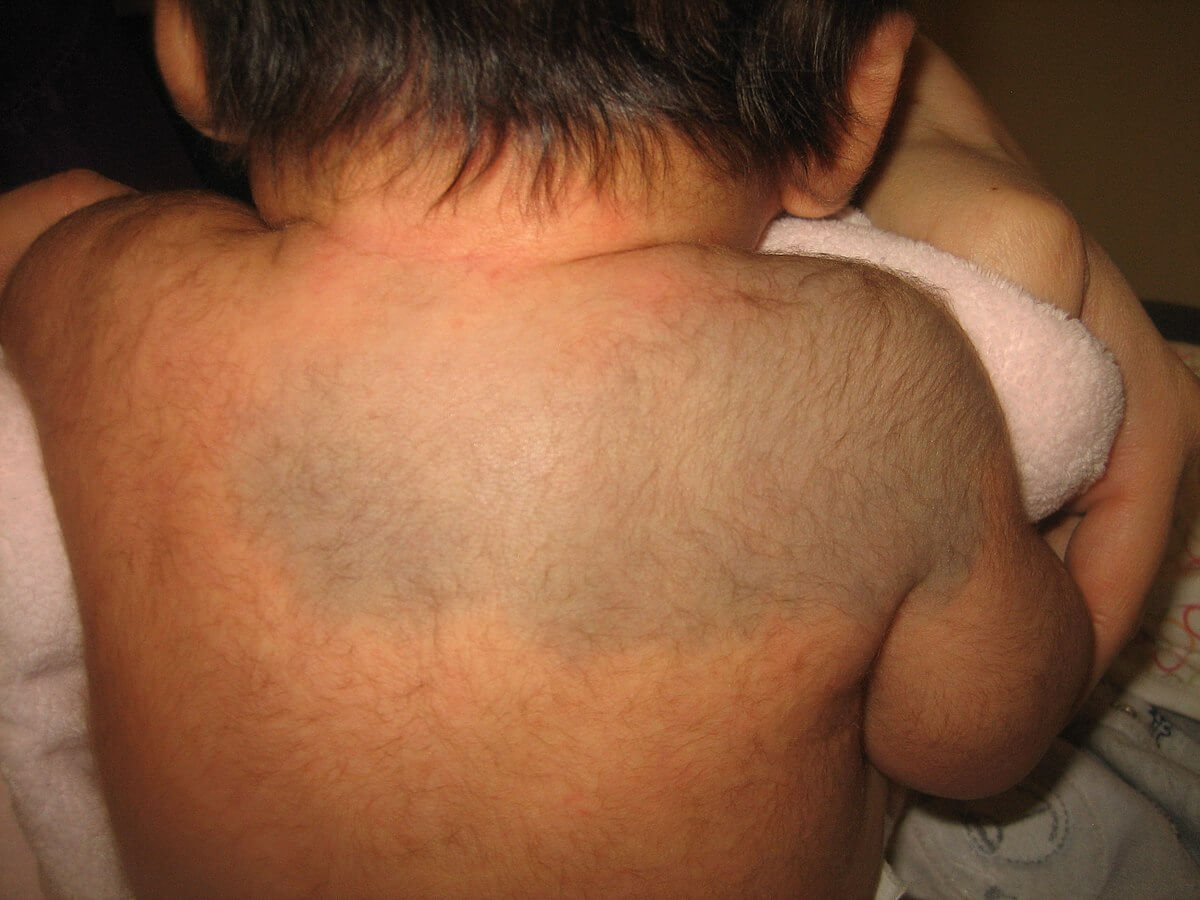Nevus of Ito
Clinical Definition
 Figure X-1, a child present with nevus of Ito | Photo courtesy of Wikipedia Opens in new window
Figure X-1, a child present with nevus of Ito | Photo courtesy of Wikipedia Opens in new window
Nevus of Ito (also called nevus fuscocaeruleus acromiodeltoideus) is a unilateral dermal melanocyte hamartoma that clinically presents as a blue to gray patchy discoloration on the surface of the skin with predilection for the shoulder, supraclavicular, neck, upper arm, scapular, and deltoid areas of the body. It is often present at birth or develops shortly thereafter.
The condition has the same features as the nevus of Ota Opens in new window except that the pigmentary changes tend to involve the shoulder, supraclavicular areas, sides of the neck, and upper arm, scapulae, and deltoid regions.
Patients are almost always of Asian, and in particular Japanese, descent. However, lesions have been reported in those of African and East Indian descent.
Nevus of Ota and nevus of Ito each can be seen in isolation or together; and both persist into adulthood and sometimes darken in appearance. They can be associated with vascular malformations, Sturge-Weber syndrome Opens in new window, and Klippel-Trenaunay syndrome Opens in new window.
Therapeutics
- Cosmetic makeup can be used.
- Good cosmetic results can be achieved with pulsed Q-switched ruby, alexandrite, or Nd:YAG laser.
See also:
- Burge SM, Ralfs IG. Nevus of Ito with sensory changes. Int J Dermatol. 1985 May;24(4):239-240.
- Mishima Y, Mevorah B. Nevus Ota and nevus Ito in American Negroes. J Invest Dermatol. 1961;36:133-54.

